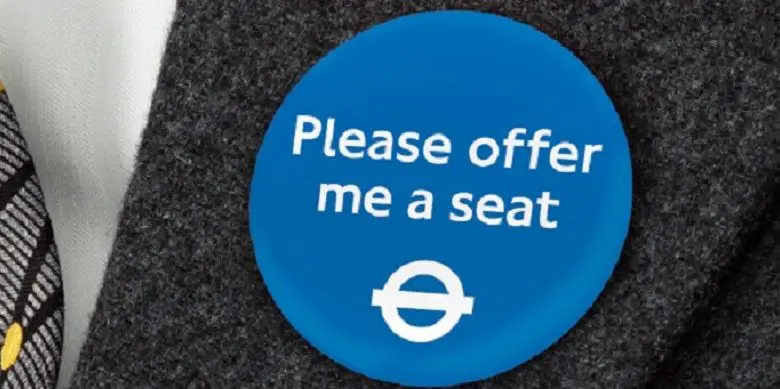
Invisible disability: coping when everyone thinks you’re healthy
We hear from reader Gloria Persiani about her ‘invisible disability’. To many people, she looks healthy and ‘normal’. But inside, she’s struggling with tiredness, muscle weakness and poor balance. Here, she shares her experiences and strategies for dealing with having an invisible disability.
My name is Gloria Persiani. I‘m Italian, live in Bologna and have had Relapsing Remitting Multiple Sclerosis since 2009. My life has completely changed since becoming unwell. I was 32 when I was diagnosed and, as you can imagine, at that age it was very hard to deal with.
 I have always loved travelling and even lived abroad. I’ve lived in Spain, Costa Rica, Fort Wayne-Indiana, San Francisco and New York, all while studying. When I was diagnosed, I thought I would never be able to do anything again.
I have always loved travelling and even lived abroad. I’ve lived in Spain, Costa Rica, Fort Wayne-Indiana, San Francisco and New York, all while studying. When I was diagnosed, I thought I would never be able to do anything again.
Between 2009 to 2011 I had a number of relapses. In 2011 I had an operation to have my jugular veins opened. I felt a lot better after this – my tiredness was diminished, my sight improved and I gained more strength in my legs. But, as with many disabilities, my main symptoms weren’t completely solved.
My main problem is ataxia, which essentially means my balance is poor. This makes standing on public transport absolutely impossible. In fact, it applies to anything moving, whether it’s a bus, train or boat. Now, being 40 years old, people often have something to say if I don’t let someone older sit down. I have even had arguments because of this.
The same thing happens when I park in disabled spots. Because I don’t have ataxia when I sit down, I can drive. But I do when I walk, so I need to park near where I’m heading. Otherwise, my life wouldn’t be like that of a ‘normal’ person my age. I wouldn’t be able to get to work; I wouldn’t be able to get to the swimming pool (swimming is the only sport I can do without feeling off balance) and I wouldn’t be able to go out in the evening as I can only walk straight when there’s light and I can see my footsteps.
So I have limits that people who only see me standing up for a minute, without moving, can’t see. But my ‘invisible disability’ is a disability, even if people who don’t know me can’t tell.
Invisible disability: strategies to help me cope
Like many others with a disability, I have had to come up with strategies to help me cope. For example, when I go to the supermarket, I always have to use a shopping trolley to help me get around the store, even if I am shopping for a small number of items. Then, when I get home to my flat with the groceries, I have to wait for a family member to come and get it from my car as I can’t go up and down stairs without using the rails.
Making travelling easier
I also need help when I travel. At first, it wasn’t easy to accept that I did, and I found it particularly hard getting used to needing to sit in a wheelchair. But, a friend convinced me to ask for assistance when flying after seeing me exhausted getting out of Gatwick airport. So, I asked for it for my next flight, and I’m so glad I did. It meant that I got on the plane easily, all fresh and ready to enjoy the flight and holiday.
After that moment I thought; “it’s time to give up hiding my ‘invisible disability’. It is there and I deserve to do all the things everyone else does.” Now, whenever I go to a big city, such as Amsterdam, London or Barcelona, I either use the Sightseeing hop-on and hop-off bus, or I rent a car. This means I can pace myself and save my energy, enabling me to see everything I want and go out at night. If I didn’t, I would be exhausted, unable to enjoy my holiday.
I have also found a great solution when it comes to seeing sights off the beaten track. There are a lot of interesting places that can only be accessed by walking to them. So, to save my energy and avoid balance issues, I rent a bike. I also always hire a double-sided bike, so that someone can take over when I get too tired.
These bikes are very easy to rent in northern European countries, but a bit harder to find in the south. I have found them to be a great solution and an easy way of moving around places where cars can’t go, such as along the canals in Amsterdam. Electric bikes are another option, as they take even less energy.
If I go on vacation in the mountains, I usually rent a snowmobile or, in the summer, I take the funicular to go up the mountains and see the amazing sights.
When I go to the seaside, I love to row. I simply rent a kayak and then go see out of the way places, such as sea caves. So, while all the rest of the troop goes hiking on cliffs, which I couldn’t do, I usually row.
I’ve found that there are lots of compromises you have to make when you have a disability. But if you admit to yourself that you have a disability and need help, whether it’s visible or not, you’ll make life a lot easier for yourself. I don’t want to ever again say to myself “I can’t do that”, but instead say “I’ll do it my own way.”
By Gloria Persiani
Get in touch by messaging us on Facebook, tweeting us @DHorizons, emailing us at editor@disabilityhorizons.com or leaving your comments below.
https://disabilityhorizonscom.onyx-sites.io/2017/04/disability-and-travel-my-new-travel-wheelchair/
https://disabilityhorizonscom.onyx-sites.io/2017/04/top-10-things-to-consider-when-renting-an-accessible-vehicle/
Hi Gloria,
You have shared all this and no one has bothered to comment. It is a shame, because I believe we are all in this together, no matter what disability we have.
I too was cut short in my 30’s. I ran my own courier business and motorcycle club.
I was taken out by a hit-and-run driver and the police weren’t interested.
I have gone from being a bodybuilder, having my own home and being married to, being in a wheelchair, living in rented accommodation and it all killed my wife, she passed away in 2014 after 12 years of wedded bliss.
I get spat on every day I venture out, abused on public transport and harassed when shopping.
Sometimes, I have to transfer onto my crutches and into my mobility scooter.
I live in Stockport, it’s very hilly, impossible to get anywhere in my wheelchair.
I have a C4-6 Incomplete Spinal Cord Injury – Syringomyelia, paralysed down my left side and I cannot feel the temperature of the atmosphere. Going from being able to go everywhere and then finding football stadiums are no-go, I have had to go 360 and live totally different, which as you know is extremely depressing and demoralising.
The whole infrastructure is devised with us designed out; Like Cycle Lanes intermittent.
Having to book in advance for First Class rail travel and concerts to see The Cure. Has its drawbacks, as I have to be well enough to travel.
I have Severe Obstructive Sleep Apnoea and am allergic to most foods now.
I used to travel there and back in a day. Now, it’s with two nights in a two different hotels in both directions, as the fatigue is soul destroying. Four night’s hotel accommodation, for travelling to London or Edinburgh. Then, there’s the destination hotel.
I set off day’s earlier to allow for recovery days. I had three days out 10 to visit Toronto in June 2016, seeing The Cure in concert again!
I take 329 tablets a week too!
The best place that I have been to is Berlin, hands down the best place in the world. Amsterdam the absolute pits! It’s people’s attitude and the infrastructure that are the deciding factors.
I went Airbnb in Berlin and swear by it. I would live there if I could.
There you go, my tuppence!
Have you tried L-Arginine? It has given me extra energy the last couple of months, that I have been taking them. They boost the Nitric Oxide in the bloodstream and widen your veins.
Warmest Regards
Andrew